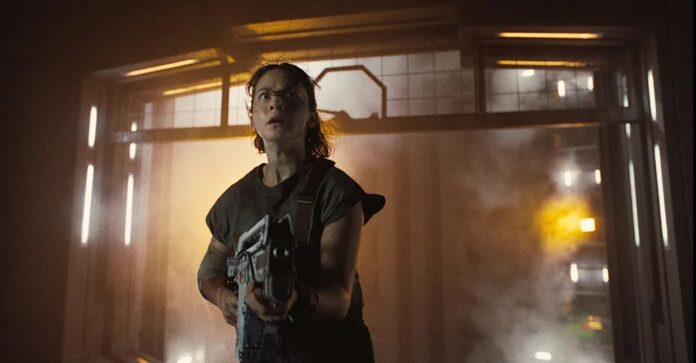This post contains spoilers for the movie “Alien: Romulus”
In the long-running “Alien” movie franchise, the Weyland-Yutani Corporation can’t seem to let go of a terrible idea: It keeps trying to make a profit from xenomorphs — creatures with acid for blood and a penchant for violently bursting out of human hosts. The corporation is fixated on capturing and weaponizing the aliens, viewing them as potential assets despite their uncontrollable nature.
No matter how many times they fail, and how many people die in the process, whenever the company stumbles on these aliens, they keep saying, “This time, we’re going to make it work.”
Sadly, as much as I liked “Alien: Romulus” (and I liked it a lot!), the new sequel (or “interquel”) can’t escape a terrible idea of its own: Hollywood’s fixation on using CGI to de-age or resurrect beloved actors.
De-aging has been more common, as filmmakers try to simulate a younger Harrison Ford in “Indiana Jones and the Dial of Destiny,” a younger Will Smith in “Gemini Man,” or a younger Robert De Niro and Al Pacino in “The Irishman.”
But effects have also been used to bring actors and characters back from the dead, like Peter Cushing’s Grand Moff Tarkin in “Rogue One.” “Alien: Romulus” tries to pull off a similar trick — while it doesn’t resurrect the exact same murderous android from the original “Alien,” it features an identical model, seemingly played by the same actor, Ian Holm, who died in 2020.
The filmmakers told Variety they brought Holm’s likeness to the screen using animatronics and a performance from actor Daniel Betts, and there’s obvious CGI. Since replacing actors with digital simulacra was one of the hot-button issues in last year’s actors’ strike, it’s no surprise that “Romulus” director Fede Álvarez recalled hearing similar comments during filming: “I remember someone saying, ‘This is it, they’re going to replace us as actors.’”
But to Álvarez, such fears are overblown.
“‘Dude, if I hire you, it costs me the money of one person,’” he said to Variety. “’To make it this way, you have to hire literally 45 people. And you still have to hire an actor who does the performance!’”
So from a bottom line perspective, working actors may not have much to worry about … yet. And there’s also this: Every example I’ve seen, including “Romulus,” looks awful.
I’m sure there are many talented visual effects artists who work on these effects, and I’m sure they’ve made some progress over the years. There’s almost something noble in the way they keep throwing themselves at the problem, only to deliver the same uncanny valley results. No matter how close they’ve gotten to the real thing, I’ve never seen a de-aged actor or digital ghost that hasn’t been immediately obvious. Every single one of them makes me aware of their artificiality for every second they’re on screen.
“Romulus” provided a particularly stark demonstration. When the audience first glimpsed Holm’s new/old character, Rook, his face was obscured. We only saw him from the back and the side, we heard a familiar, distorted voice, and it was creepy. Suggestion did all the work, no digital resurrection required (at least not visually).
Then, unfortunately, the movie cut to his face and I immediately groaned in recognition. Rather than focusing on the obvious CGI on screen, my mind wandered, imagining some studio executive saying, “This time, we’re going to make it work.”




